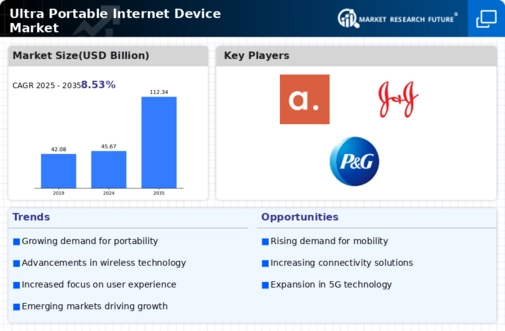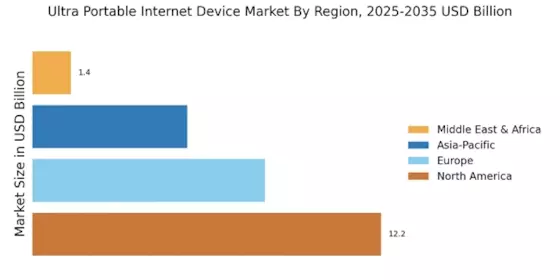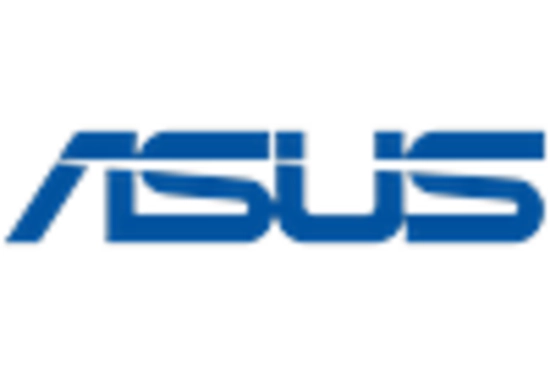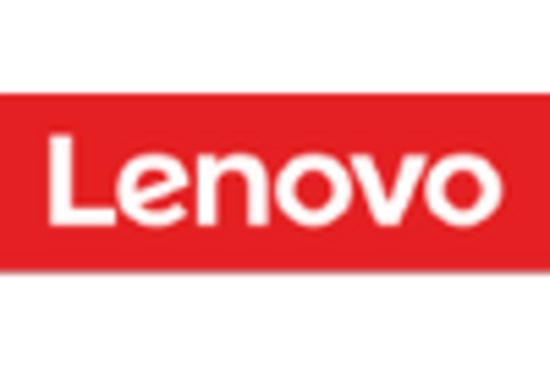Advancements in Technology
Technological advancements seem to play a crucial role in shaping the Ultra Portable Internet Device Market. Innovations in battery life, processing power, and connectivity options have led to the development of devices that are not only lightweight but also highly efficient. For instance, the introduction of 5G technology has significantly improved internet speeds, making ultra portable devices more appealing to consumers. Market data suggests that the adoption of 5G is expected to reach 1.5 billion subscriptions by 2025, further driving the demand for devices that can leverage this technology. As a result, manufacturers are likely to invest in research and development to integrate these advancements into their offerings.
Increased Mobile Workforce
The rise of the mobile workforce appears to be a pivotal driver for the Ultra Portable Internet Device Market. As organizations increasingly adopt remote work policies, the demand for devices that facilitate seamless connectivity has surged. According to recent data, nearly 70% of employees now work remotely at least part of the time, necessitating portable solutions that ensure constant internet access. This trend indicates a growing reliance on ultra portable devices that can easily be transported and used in various environments. Consequently, manufacturers are likely to focus on enhancing the portability and functionality of their products to cater to this expanding market segment.
Expansion of E-commerce and Online Services
The expansion of e-commerce and online services appears to be a driving force behind the Ultra Portable Internet Device Market. As more consumers turn to online shopping and digital services, the need for reliable internet access on the go has intensified. Market analysis indicates that e-commerce sales are projected to reach 6.4 trillion dollars by 2024, highlighting the increasing reliance on internet connectivity. This trend suggests that ultra portable devices must cater to consumers who require constant access to online platforms, thereby creating opportunities for manufacturers to innovate and enhance their product offerings.
Growing Consumer Preference for Portability
Consumer preferences appear to be shifting towards portability, which is a significant driver for the Ultra Portable Internet Device Market. As lifestyles become increasingly mobile, individuals seek devices that can easily fit into their daily routines. Recent surveys indicate that over 60% of consumers prioritize portability when selecting internet devices. This trend suggests that manufacturers must focus on creating lightweight, compact designs that do not compromise on performance. Additionally, the rise of digital nomadism, where individuals work while traveling, further emphasizes the need for ultra portable devices that provide reliable internet access in diverse locations.
Emerging Markets and Increased Internet Penetration
Emerging markets seem to present a significant opportunity for the Ultra Portable Internet Device Market. As internet penetration rates rise in developing regions, the demand for portable internet solutions is likely to increase. Recent statistics indicate that internet users in these markets are expected to grow by over 20% in the next few years. This growth suggests a burgeoning consumer base that seeks affordable and efficient internet devices. Manufacturers may need to tailor their products to meet the specific needs of these markets, focusing on cost-effectiveness and accessibility to capture this expanding audience.

















Leave a Comment